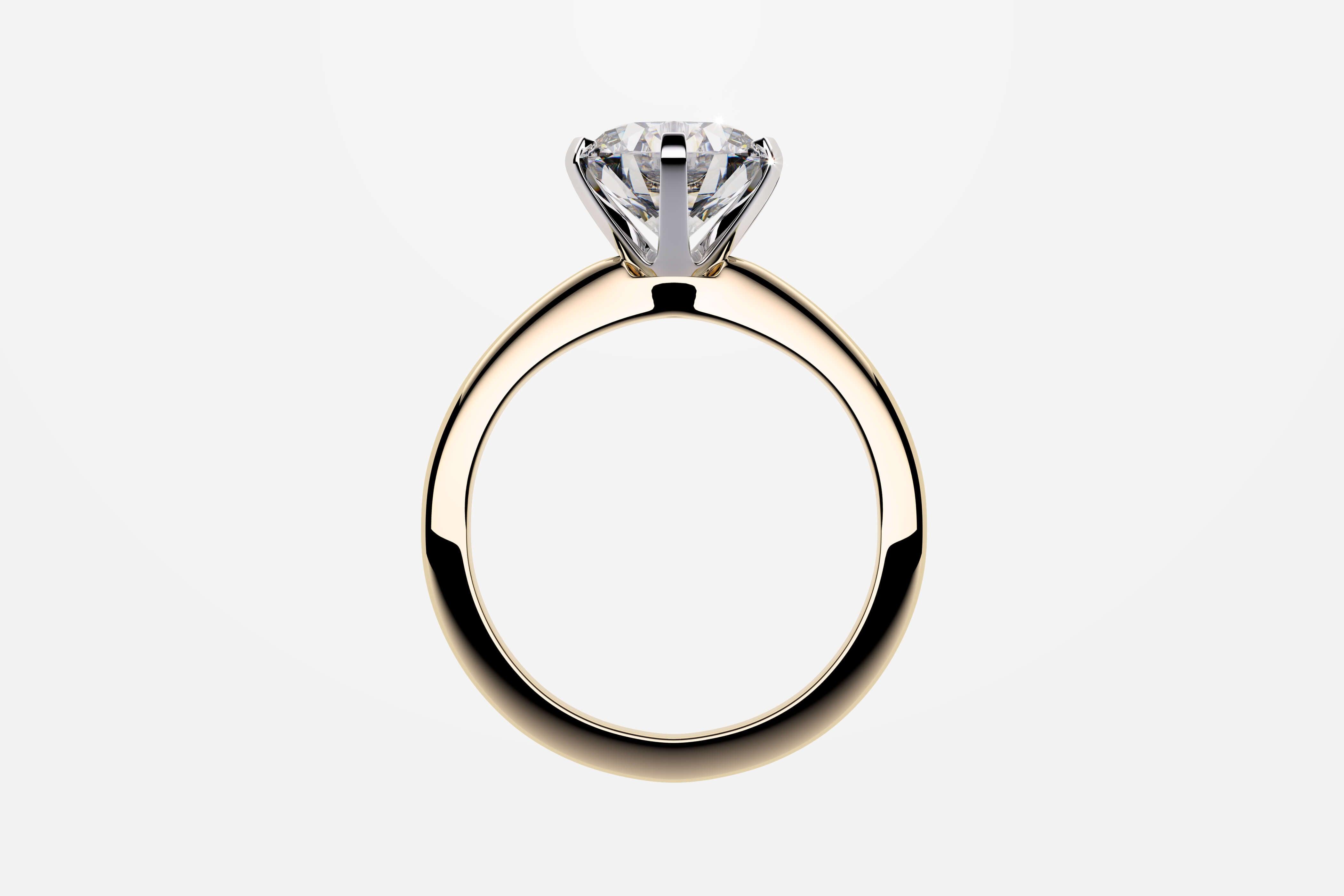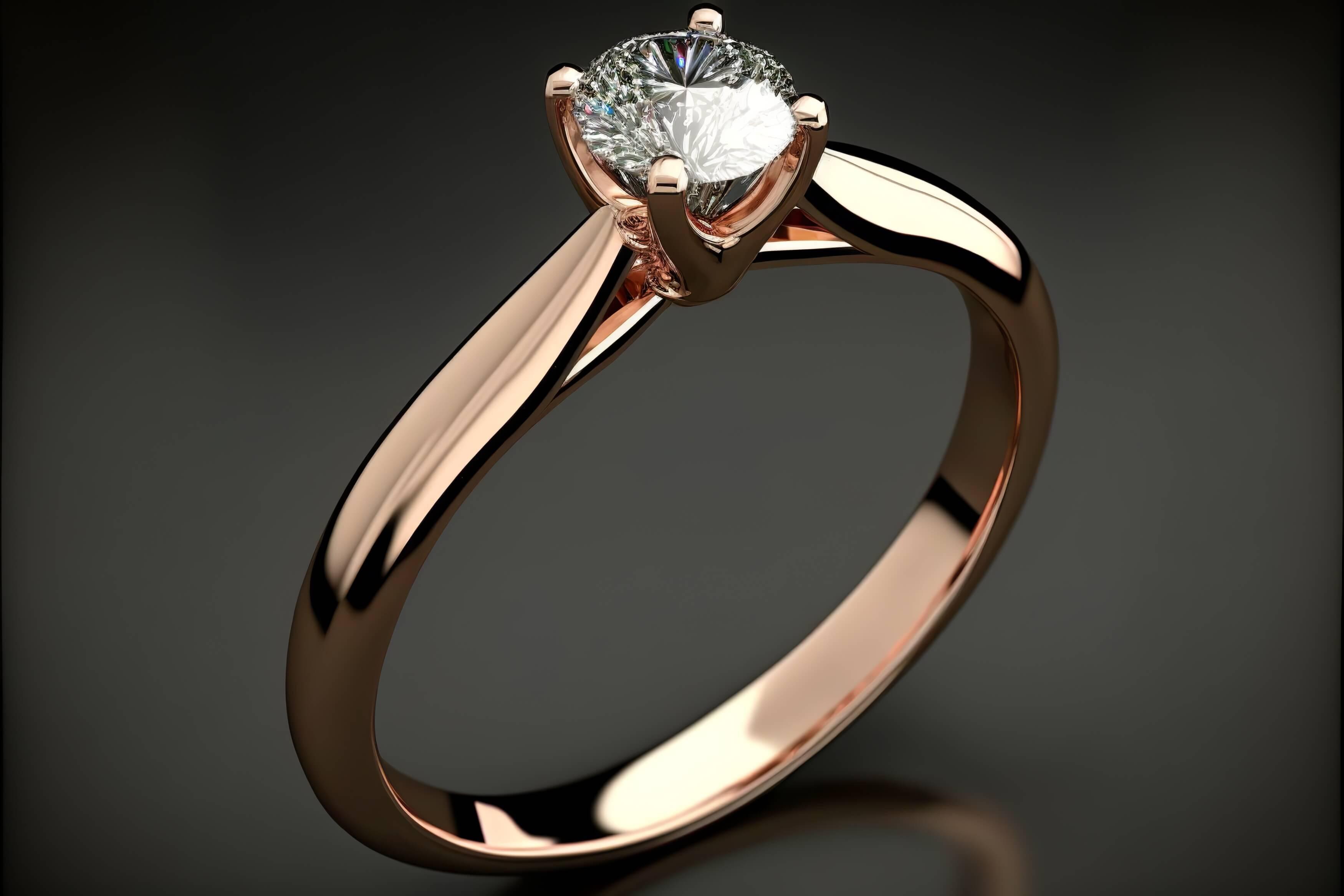
The Scoop On Brilliant White Gold
What shines like the sun, is tough as nails, and is popular with diamonds?
White gold obviously, (and platinum, but we'll be covering platinum in another article.)
Cheek aside, white gold has held (an increasing) popularity for ages, and for good reason. While yellow gold has the warm hue of the rising and setting sun, white gold is reminiscent of the blinding white sun at noon. That makes it an especially popular metal for diamond jewelry.
Indeed, today, it is one of the most popular metals for wedding rings and engagement rings, especially for diamond engagement rings.
But is it right for you?
What is white gold and what is white gold made of?
Everyone knows pure gold; that heavy, gleaming, yellow metal that is worth so very much. No wonder we have the phrases "gold standard," and "worth its weight in gold."
It is also rather soft. Too soft to be used in jewelry.
I mean, if a gold miner can bite a nugget of pure gold and make a serious dent like they do in the movies (and in those rare life moments where you find a big nugget (because who doesn't go panning on their day off...) then it certainly isn't strong enough to take the daily ware that an engagement ring goes through- nor certainly keep the diamond secure in the setting.
So pure gold gets mixed with stronger metals to make alloys strong enough for jewelry. Depending on the amount and color of the mixed metals, you can keep a yellow tint, or create white gold or rose gold.
A white gold alloy is made up of gold and other white metals, normally a combination of one or two of the following: Silver, Nickel, or Palladium.
There is also something that is sort of a natural white gold, called electrum, which is when silver and gold are found naturally alloyed. In ancient times it was especially prized. It was used to make the first known coinage and to cover monuments such as the pyramidions atop Egyptian pyramids and obelisks.
14k or 18k?
White gold comes in two varieties, 14k and 18k. Just as it is with yellow gold and rose gold, the number denotes the amount of gold in the alloy. So you can read them as fractions: 14/24 vs 18/24, with the remainder, made up of other white metals. Though both are created to have the same white metal luster, they have different strengths.
14k white gold is a more durable metal than 18k and is in fact stronger than platinum. 18k white gold is still strong but is more prone to scratches and nicks, so needs repolishing more often.
White gold versus platinum?
White gold. Just the name of this substance evokes joyful and warm images and feelings.
Unlike its bright white counterpart platinum, there is no gleaming intensity of silvery-whiteness like the blazing sunlight you get on a winter’s day, reflecting wildly off the snow.
Rather, the softer, warmer tones of white gold evoke the glamor and gleam of the mid-day Mediterranean sun playing upon the dancing turquoise waters of the Aegean.
White gold is slightly lighter in weight than platinum though just as durable, and often less expensive; whilst platinum has a more evocative reputation and less maintenance.
For a more in-depth comparison of platinum vs white gold, please read our previous article.
Rhodium plating
Often white gold jewelry is plated with rhodium, a precious metal in the platinum family. Rhodium is also considered a “noble metal” meaning that it does not generally react with most other elements, making it resistant to corrosion.
Rhodium-plated white gold jewelry has a hue closer to platinum than silver and is much more durable than platinum or white gold. One of the few downsides is that the rhodium coating must be re-plated. How often replating must occur is entirely dependent upon how much wear the jewelry goes through. So expect rhodium-plated white gold engagement rings, that get worn regularly, to need re-plating at least once in a decade.
Does white gold tarnish?
The simple answer to this question is no.
The more complicated answer to this question comes in two parts:
1) What is tarnish?
Tarnish is another term for corrosion, where the metal reacts with other elements. In this case, the actual metal changes, resulting in a visibly noticeable change of color, and often texture. Most alloys of white gold using either nickel or palladium do not tarnish, since gold, nickel, and palladium are all corrosion-resistant. There is a possibility that an alloy made with a high content of silver will tarnish, however, we avoid using such alloys at Michael Gabriels.
2) Plating erosion:
A lot of white gold is plated with Rhodium to protect it and keep it shining brightly. Because of the subtle difference in tone between rhodium and white gold alloys, when the rhodium plating eventually wears off, it can look like the ring is tarnishing when in fact the plating is simply wearing thin. This is the most common reason why people think their white gold ring is “going yellow.”
Unfortunately, there are also pieces of jewelry on the market that are called “white gold,” but which in fact are not. Most of the time these are pieces of yellow gold or another metal that have been plated with rhodium and the rhodium has worn off.
How do you take care of white gold?
Cleaning and maintenance
White gold is largely corrosion-resistant, so it won't tarnish, but still requires polishing every few years or so depending on the degree of wear the ring has undergone. Since it is a strong alloy, dings, nicks, and scratches are likely to be minor and easily removed by a jeweler through normal polishing.
To keep your white gold sparkling at home, wash it with warm water and mild soap and dry it with a soft cloth.
If white gold has been plated with Rhodium, it will need re-plating. How often is entirely dependent on the degree of wear, but at Michael Gabriels, we generally find once a decade to work for most white gold engagement rings.
At Michael Gabriels
Here at Michael Gabriels, we specialize in bespoke and customized jewelry, working with white gold all the time. Our expert craftsmen are some of the best in the world, located right here in New York City.
Start by checking out our collection for customizable pieces, or design your perfect ring or other jewelry from scratch.
You can contact us online or on Instagram, and make an appointment, or just walk into our showroom in Soho.



